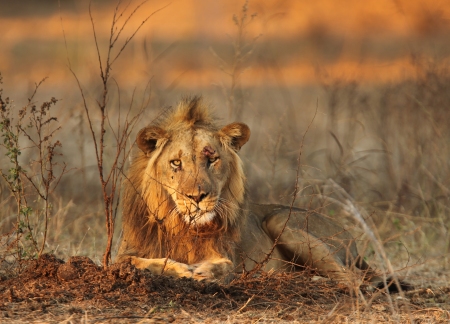
When asked by my English literature teacher at Chegutu High School about my career in the next world, “Mablues”, Mrs Mboweni of course, I would answer in the negative, if one day I would become a parasite author. I had also never wanted to consider it as a career to become a father of one or ten as part and parcel of my Shona culture though pretty important to raise my one and only one daughter Shanna and to show her mother that I will always standby her forever. This has always been a necessity in this modern word of uncertainty.
It is in my memory as a child as I developed a godly friendship with Julie Taylor. She was my first unconditional teacher in helping me speak English. My mother, Shupi, had not gone to school as she was raised from a financially disadvantaged family, but could interpret Julie’s words as they were. We had extended our relationship to nature, our natural television set, (as a TV set was too expensive to possess in those days), and to watching antisocial bullying behaviour of male baboons. “The baboon can’t behave and adopt good manners”, Julie could say. Baboons always seemed to have bad manners, unlike black rhino, elephant and hippo.


I had weavered a garment of thought for that time, today and tomorrow, observing life and try to understand the world which is still invaded by ever growing peer pressure in many respects, let alone that for material possessions. However, Nature is always existing in silence and some rare species are getting into extinction.
Africa is resource rich.
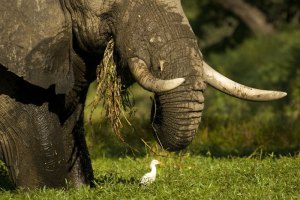
Baboons are a carefree species in respect of family planning. Have you ever seen a female baboon without a baby on her back? Come to Africa, come to Zimbabwe and if you don’t come to Matusadona, you may never enjoy nature in solitude and respect it.
Amongst the 13% of Zimbabwean soils set aside by the Government for National Parks therein is a handsome 1,400sq km of Matusadona on the southern shore of Lake Kariba. Ume River marking the western boundary of the park and Sanyati demarcating the eastern side. According to my little knowledge I stick to that the Tonga people were the first to inhabit the Zambezi Valley, the Gwembe Valley, which today I refer to as the Tongaland, a land of nature, of challenge and excitement.

Once upon a time, there was a lone lion in Tashinga. To us Field Rangers, it displayed unusual behaviour. It drew everyone’s attention – Paul, the ecologist wanted to make a detailed research on it. I was a general hand, knowing little except what I had always observed. I didn’t want to be nothing, neither be something nor anybody but myself. We followed it quietly, helped by its spoor and signs of its presence in its area, which we shared. Little did I know I was going through free education in animal behaviour.
Weary and tired after travelling long distances, we sat and watched a Loxodonta Africana bull tearing some Mopane branches, pulling up great tufts of grass and knocking down Commiphora trees. It was a lesson to me, son of Mafuka, a me who knew nothing. I felt this was not happening to every plant in the Valley of Nagana Tsetse Flies. It was modification and enrichment of the habitat.
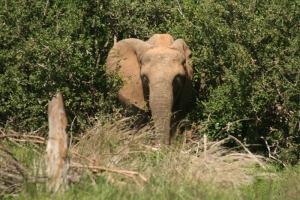
Each and every day passed with episodes of possible danger, always exciting. When the wind changed its direction, the elephant screamed a blood curdling shriek that could have secured some accolades or rewards.
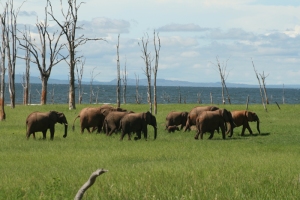
We crossed small rivers, drank untold spring water and slept in the open at night, under old and torn mosquito nets. In amongst those bushes you could see carnivores. These would have inevitable clashes of interests, characterised by odd lifestyles, large or small in size, nocturnal or diurnal, perhaps solitary or perhaps social.

Cheetahs walk like indolent beauty contest queens at Miss World Contest, their small heads seemingly unproportional with the rest of their colourful bodies. To avoid competition, they hunt during the day, giving the rest of the darktimes to nature’s King Panthera leo and other nocturnal mammals – like the Smallspotted Genet cat G. genetta, and Leopard Panthera p. pardus
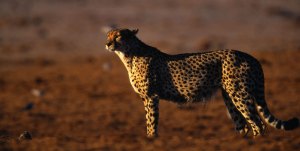
Seeing is believing.
I discovered that I ate sadza and beans from a plate in my hard hands but leopard’s food was mobile, always running until pounced and heavily knocked down like John Cena does in the WWE wrestling ring.
We had picked up the spoor of our lion.
It is very difficult to establish the intentions of its owner from the lion’s footprint. It led us through the Jesse bushes, to open Mopane woodland, then onto part of the lakeshore and allowed us to cross the Jenje River, and see Hippo communities, as we were very close to the lake.
The bushes showed signs of Stone Age human inhabitation. Broken dagga pots, corner poles of huts and possible graveyards, now turned into antelope grazing grounds.
This connects me with Tonga drums that I hear faintly from Mola rural area to the west… they practise cleansing ceremonies, burial of their beloved ones or unveiling of tombstones of their ancestors. Their culture never dies. It is modified by effort of the environment and time. They drink homebrewed beer (brewed over one day or seven days), sing, dance, and marry young decent girls, valuing uncomplicated marriages and respect for women. That’s where gender equality illuminates like fire from a gas refrigerator burner – a blue and efficient flame used to chill and preserve food. That’s why the inhabitants of the Gwembe Valley had lived a symbiotic life. Grabbing meat from lions’ kills in their early days, they hunted and gathered in largely Mopane scrub and woodlands, consisting of Combretum species and Terminalias.
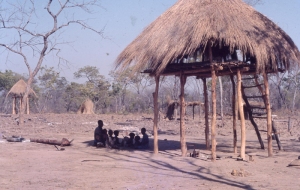
Had cheetahs not been introduced from the Lowveld of Zimbabwe into Matusadona, our tracking could have been made easy, since we were equipped with no modern tracking devices.
A man will never die many times before his actual death with hunger or danger in the wilderness. We made Cream of Tatar from ripe Baobab Adansonia Digitata fruits, have energy, improve our digestive system that had us constipated due to too much sadza and beans. This was our breakfast, lunch and dinner. Then once again we continue our patrol, following our adult bull elephant seemingly scouting for another Elephant Clan to challenge for a date – to gain mating rights and leadership.
I was walking in the tracks of our ancestors.
Tracking was no easy way from the dangers of other wild animals. We had camped in the home or territory of Cheetahs. One male Cheetah had died without resistance: some friends of the same species had entered the territory of other cheetahs resulting in a brutal attack. I trembled as I heard cracking of his bones as attackers tore mouthfuls of skin from their enemy. It was like a year-long civil battle though it had only lasted for two hours. I wondered if this could have been the cause of a drop in Cheetah population in the rocky mountains demarcating the Gwembe Valley and the Matuzviadonha escarpment.
There, I see, is desperate need for special trained scientists, conservationists, and donations towards spearheading of Cheetah’s survival. We must bear in mind on every necessary aspect of Cheetah survival into the next century, before they are in extinction.
I had witnessed such violence every night we pitched up in their territory.
My body had changed. Since my first day in the Gwembe Valley, fresh from the Tashinga village, with the scent of “Geisha” Bathsoap and deodorants from affordable Chinese retail outlets, I left my body and soul being part of the Bundu. Smelling fish, elephant, butterfly, lavender croton and a watchful selfguard to the bitter but necessary bites from the Tsetse Fly of the now Zambezi Valley.
It is in my poor memory that I can’t remember how long it took us to be able to be blessed with harmless chances of long years observing Nature in its silence. My God is good, blessing me with a memorable moment of watching of the ritual courtship, the chase and kill for survival game, how young Lions are brought to the world of wildlife and how the hunting lessons are instilled in young ones….. rest and hunt for survival.
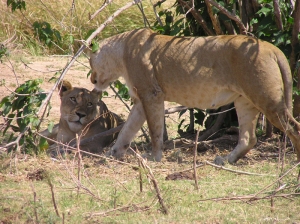
Those were images. Unimagined memories.
Had it been one day our fellow sons of the soil put into an unforgettable accident danger that would be heralded on modern communication means? They could be a contributing factor in understanding the pre-existence of these roars echoed since a million years ago until today by the king of beasts, the Panthera Leo. I had developed a relationship, a friendship that allowed me to identify Lions by scars on their body, the condition of its tail, any missing tip of the tail from a previous fight, missing teeth from fighting for survival of a preyed zebra, the King of Kick boxer of the untamed African jungle. Lions are very social cats.
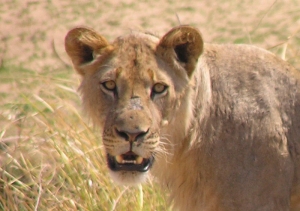
On Ambush Duty, I witnessed signal calls of initiating the mating game. Moving cat walking around the male to give him her scent. Everlasting dedicated mating intervals per initiated chances in a remarkable and appreciated reproduction. They are trying to bring a successional change that could reach an unpredicted climax.
Lions will be lions and baboons will be baboons.
One day, in the middle of a hot Kariba afternoon, sitting under a cooling shade of a Julbernadia globiflora, a broad species dominant in the deciduous lowland of Matuzviadonha, I saw a lioness come to drink water. Was it the one we were tracking? No, it was a different promising future mother. It took a few minutes to flip up some small volumes of perennial spring water – their water, our water, we used to make tea in good mornings and home made bread, meals, bathing and drinking water for the next journey or just a day. A real day. It was a life’s experience.
The Kariba sunset came and faded into a fearful night, a night full of threatening sounds. This could keep any cowards alert, awake all night long, until the next morning that would allow us to walk again in the tracks and signs of our land, a land from our Tonga ancestors.
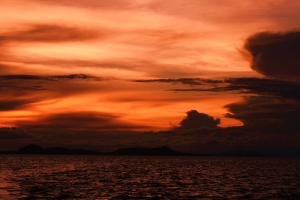
Your visit to (Matuzviadonha) Matusadona National Park, to the Land of the Tonga, and the King of the Beasts, should happen quite soon. Get in touch with lynne@thetashingainitiative.org